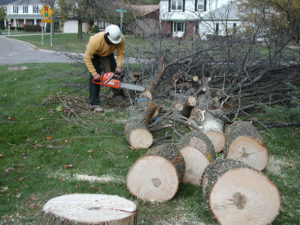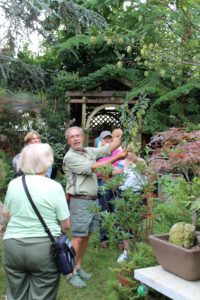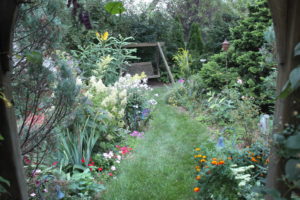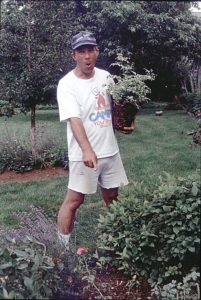Name That Plant
September 27th, 2016
One of the hardest questions I get is, “What is this plant?”
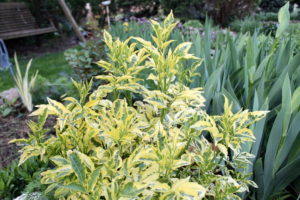
Is this a variegated dogwood, a variegated elderberry, or a viburnum with a virus? The correct answer is, B, variegated elderberry.
People will bring me a dried-up blossom, email me a blurred leaf photo, or show me a tiny photo on a smart phone, hoping I’ll be able to tell them what they have or what they saw.
Sometimes I can tell, mainly when it’s something common or distinctive. But most of the time, I take the “no-clue” route or guess, “Variegated dogwood? How about a variegated elderberry? Would you believe a viburnum with a virus?”
That’s why I was keen to try a new smart-phone app called Leafsnap that came out a few years ago from a team comprising folks from Columbia University, the University of Maryland and the Smithsonian Institution.
I downloaded the app, snapped a few pictures of trees in a state park, and waited for the software to tell me beech or birch?
Ha! The performance was so dismal that after a few more days and tries, I scrapped the app altogether.
Half the time, Leafsnap rejected photos outright, telling me they weren’t good enough or couldn’t be read.
When the app examined a photo and actually gave me feedback, the list was so long and varied (two dozen possibilities in one case) that a second-grader’s leaf-collection homework project would’ve been more useful.
Maybe Leafsnap has improved since my trial. Or maybe you’ve had a better experience. But to me, it was another case where injecting technology into gardening came up short – similar to my experience with the Flower Power Plant Sensor (a gizmo designed to wirelessly feed info on soil moisture and fertilizer needs) or that digital sprinkler timer that did everything except change its own batteries – and work without leaking.
The world of app developers isn’t giving up on the idea of digital plant-identifying. In fact, several new ones have come along – admittedly, none of which I’ve been eager to try.








